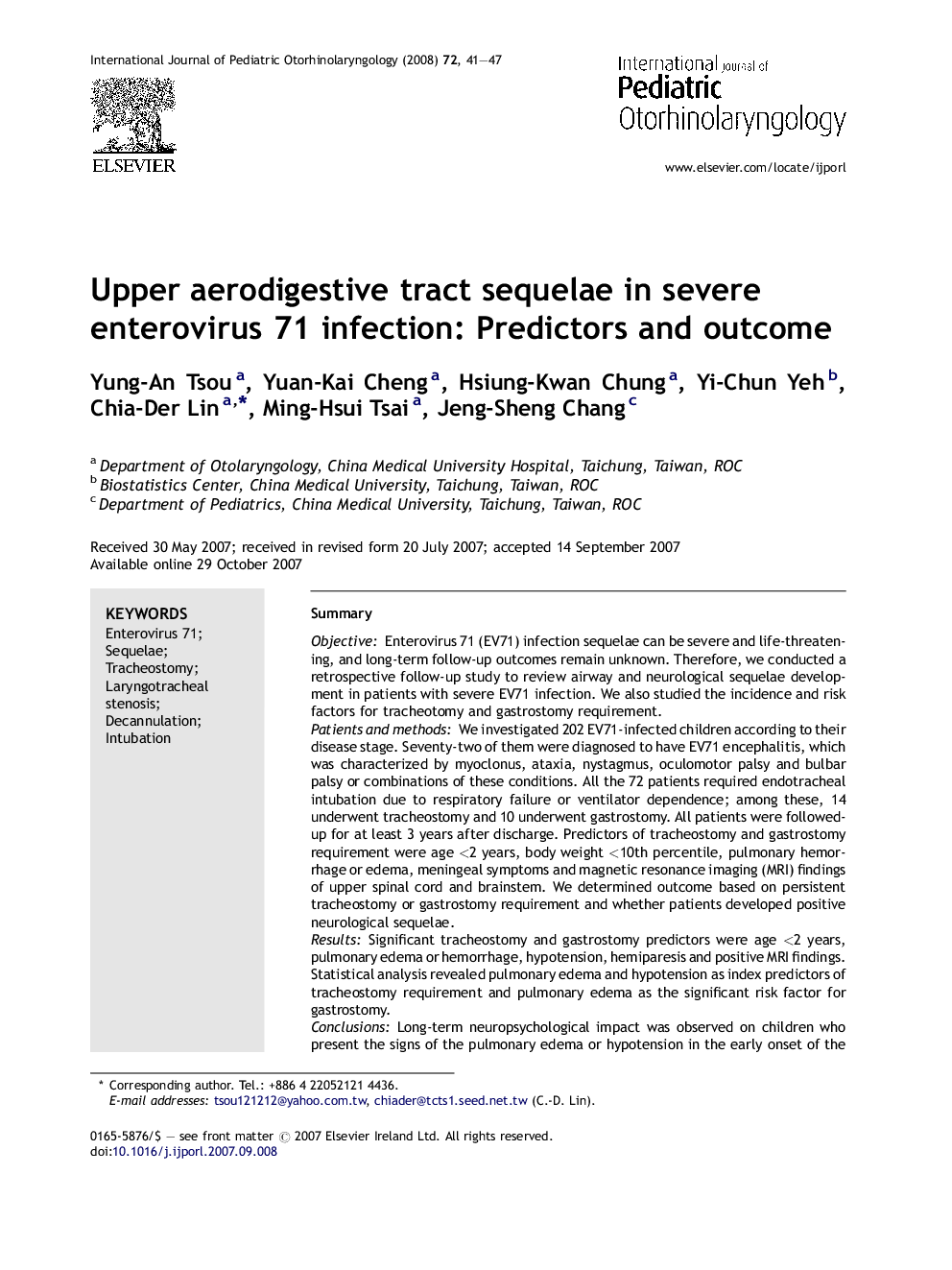| کد مقاله | کد نشریه | سال انتشار | مقاله انگلیسی | نسخه تمام متن |
|---|---|---|---|---|
| 4115563 | 1606087 | 2008 | 7 صفحه PDF | دانلود رایگان |

SummaryObjectiveEnterovirus 71 (EV71) infection sequelae can be severe and life-threatening, and long-term follow-up outcomes remain unknown. Therefore, we conducted a retrospective follow-up study to review airway and neurological sequelae development in patients with severe EV71 infection. We also studied the incidence and risk factors for tracheotomy and gastrostomy requirement.Patients and methodsWe investigated 202 EV71-infected children according to their disease stage. Seventy-two of them were diagnosed to have EV71 encephalitis, which was characterized by myoclonus, ataxia, nystagmus, oculomotor palsy and bulbar palsy or combinations of these conditions. All the 72 patients required endotracheal intubation due to respiratory failure or ventilator dependence; among these, 14 underwent tracheostomy and 10 underwent gastrostomy. All patients were followed-up for at least 3 years after discharge. Predictors of tracheostomy and gastrostomy requirement were age <2 years, body weight <10th percentile, pulmonary hemorrhage or edema, meningeal symptoms and magnetic resonance imaging (MRI) findings of upper spinal cord and brainstem. We determined outcome based on persistent tracheostomy or gastrostomy requirement and whether patients developed positive neurological sequelae.ResultsSignificant tracheostomy and gastrostomy predictors were age <2 years, pulmonary edema or hemorrhage, hypotension, hemiparesis and positive MRI findings. Statistical analysis revealed pulmonary edema and hypotension as index predictors of tracheostomy requirement and pulmonary edema as the significant risk factor for gastrostomy.ConclusionsLong-term neuropsychological impact was observed on children who present the signs of the pulmonary edema or hypotension in the early onset of the EV71 infection. EV71-infected patients who develop neurological pulmonary edema or hypotension should be hemodynamically stabilized and undergo early tracheostomy to prevent further complications. This may improve the decannulation success rate after the brainstem function recovers.
Journal: International Journal of Pediatric Otorhinolaryngology - Volume 72, Issue 1, January 2008, Pages 41–47